Abstract
Following exposure for a minimum of 500 to 600 trials, three of four naive squirrel monkeys eventually pressed a response key, illumination of which always preceded delivery of a food pellet. Three other naive monkeys did not press the key when the pellets were delivered randomly with respect to key illumination. Despite some similarities to autoshaping using pigeons, the data indicate many points of difference when squirrel monkeys are used as subjects. Although key-food pairings were shown to be important in the acquisition of the key-press response, they were ineffective in maintaining the response when either a negative response-reinforcer dependency was introduced, or when there was no scheduled response-reinforcer dependency (fixed trial). Not all demonstrations of autoshaping can be considered to be under the control of those processes that are primarily responsible for the phenomena obtained in pigeons.
Full text
PDF

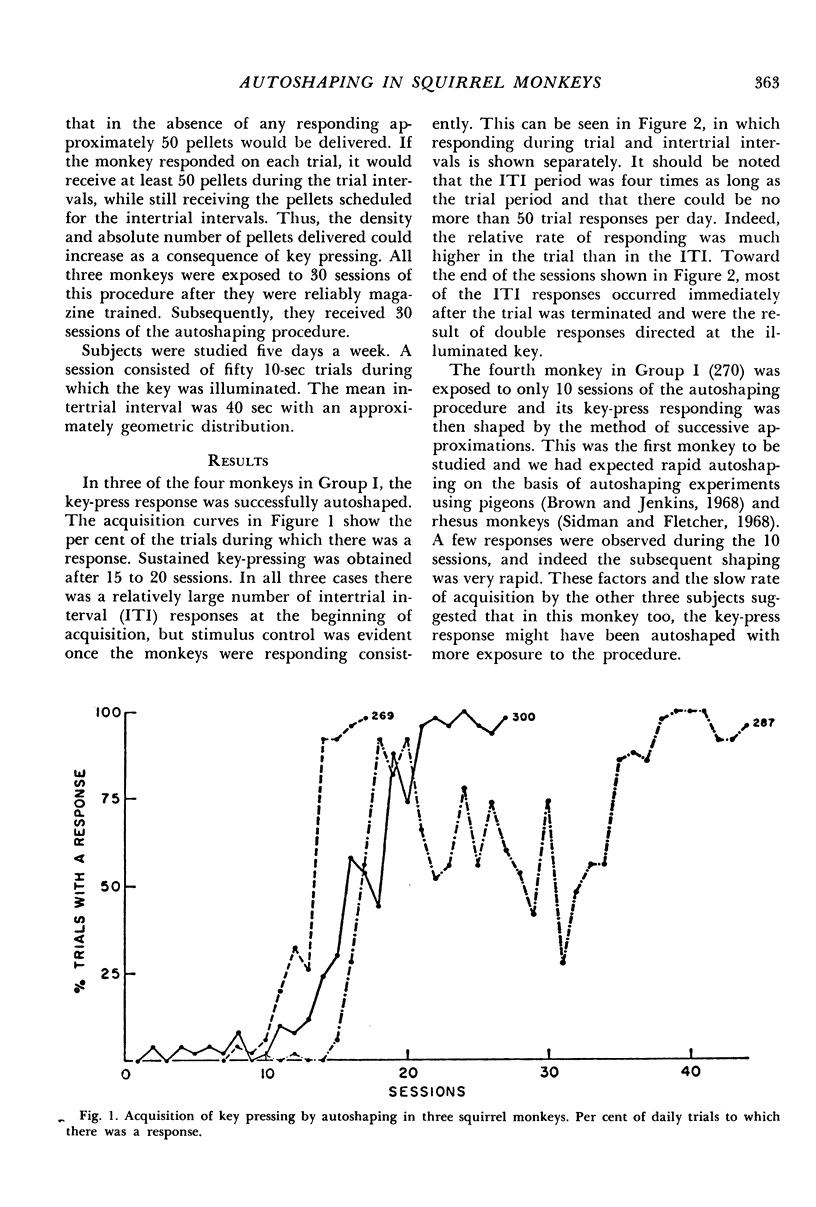
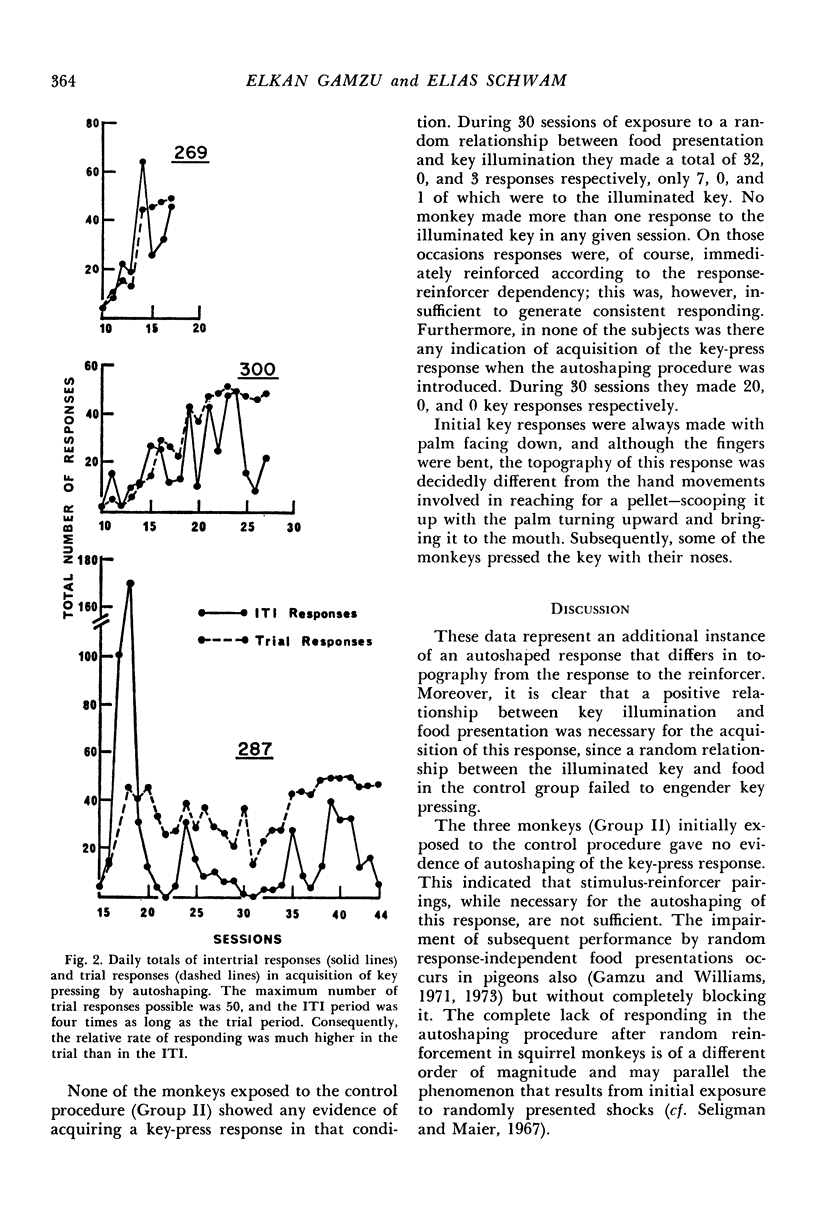
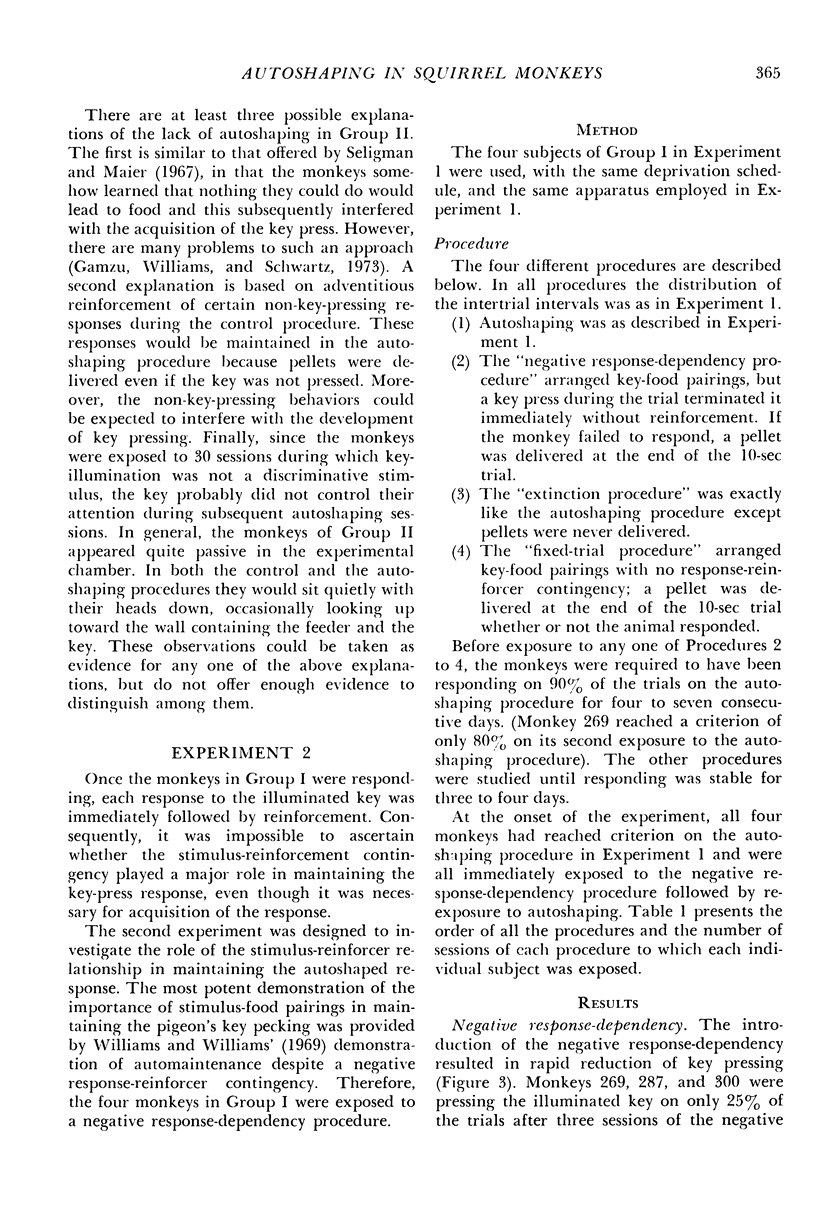
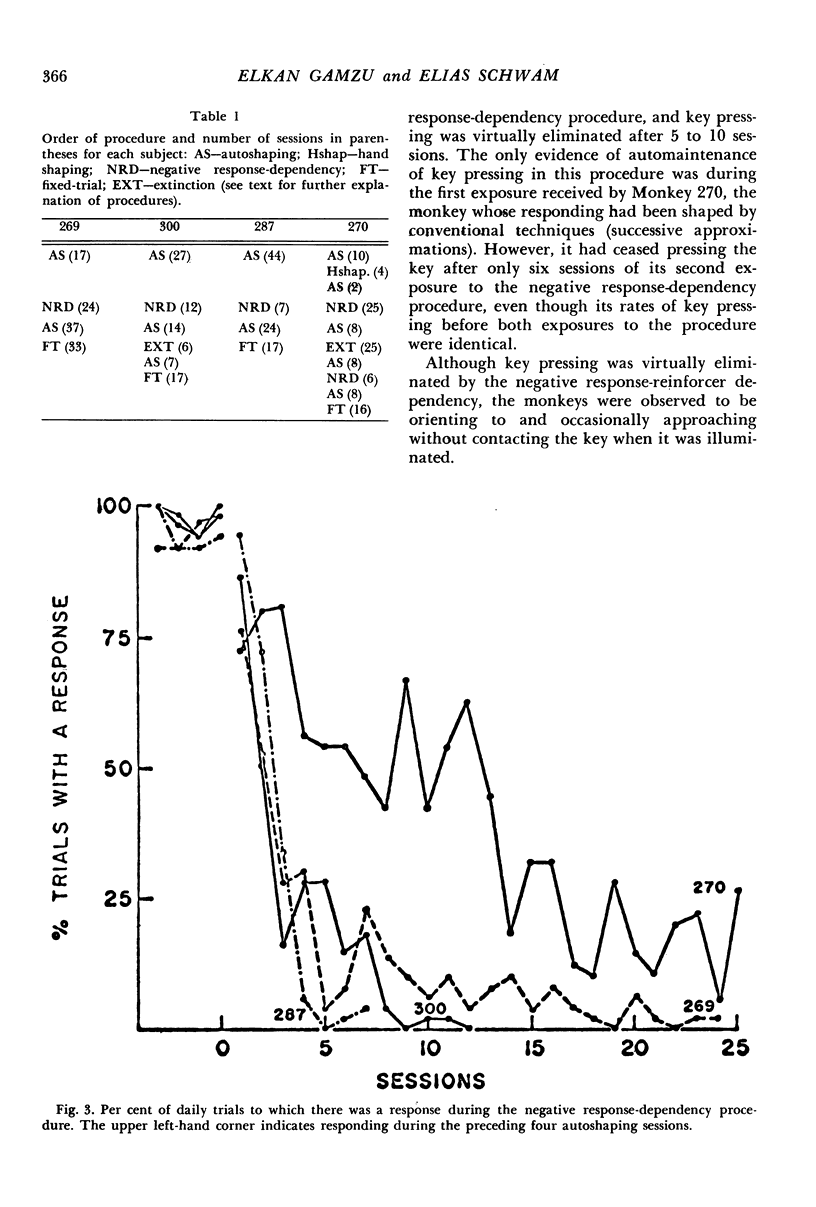
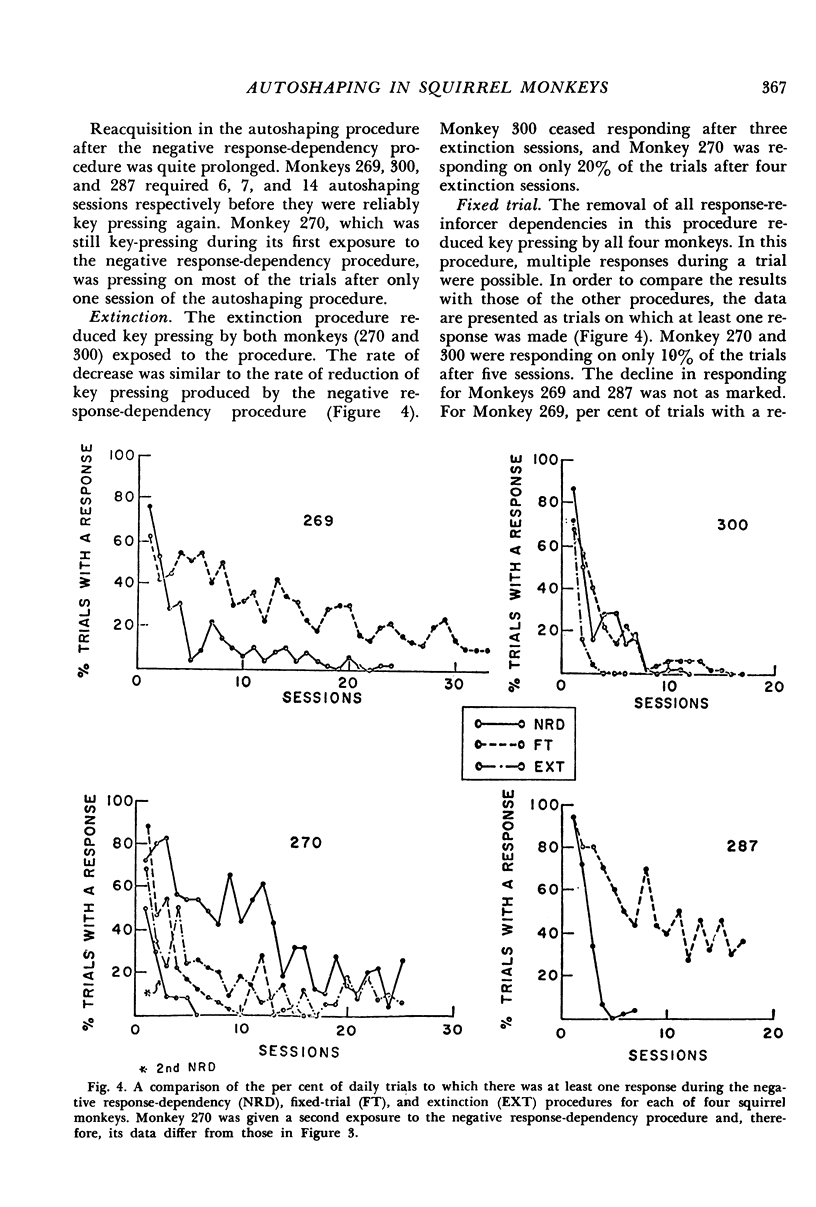
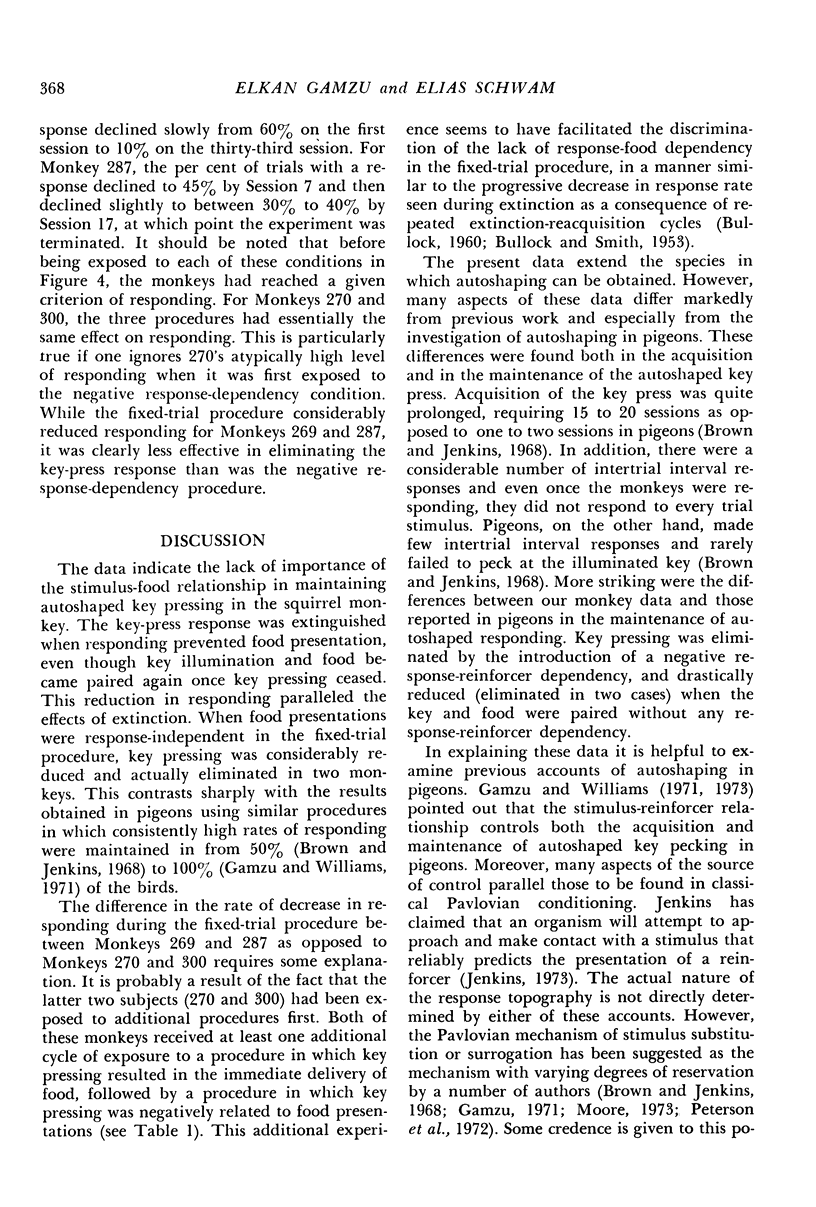
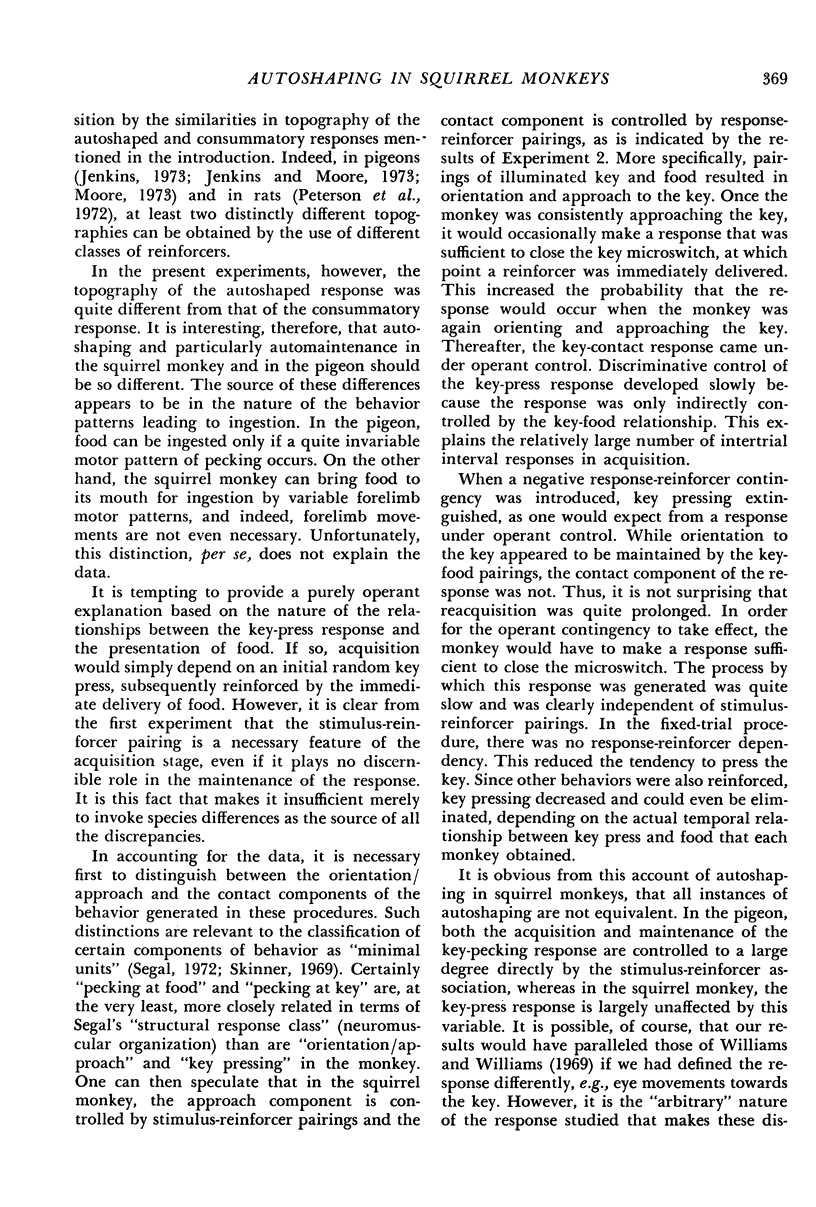
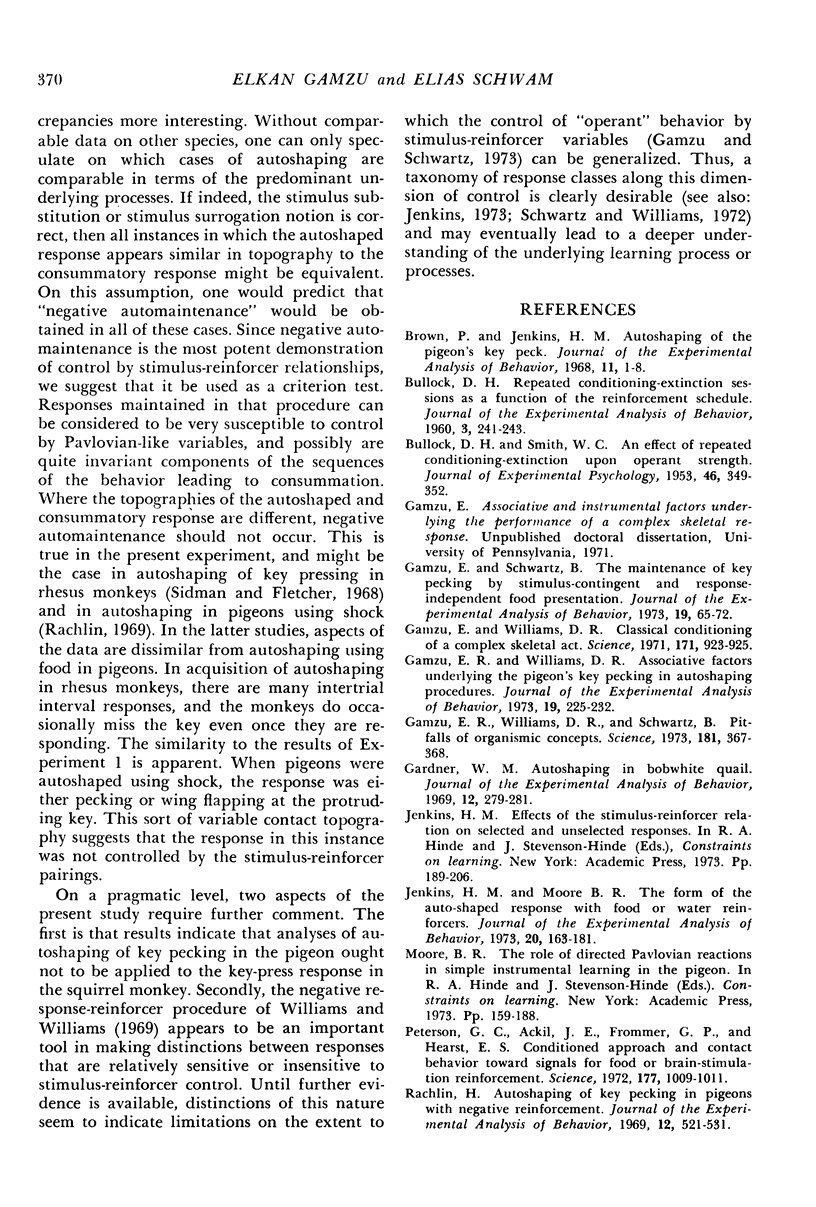
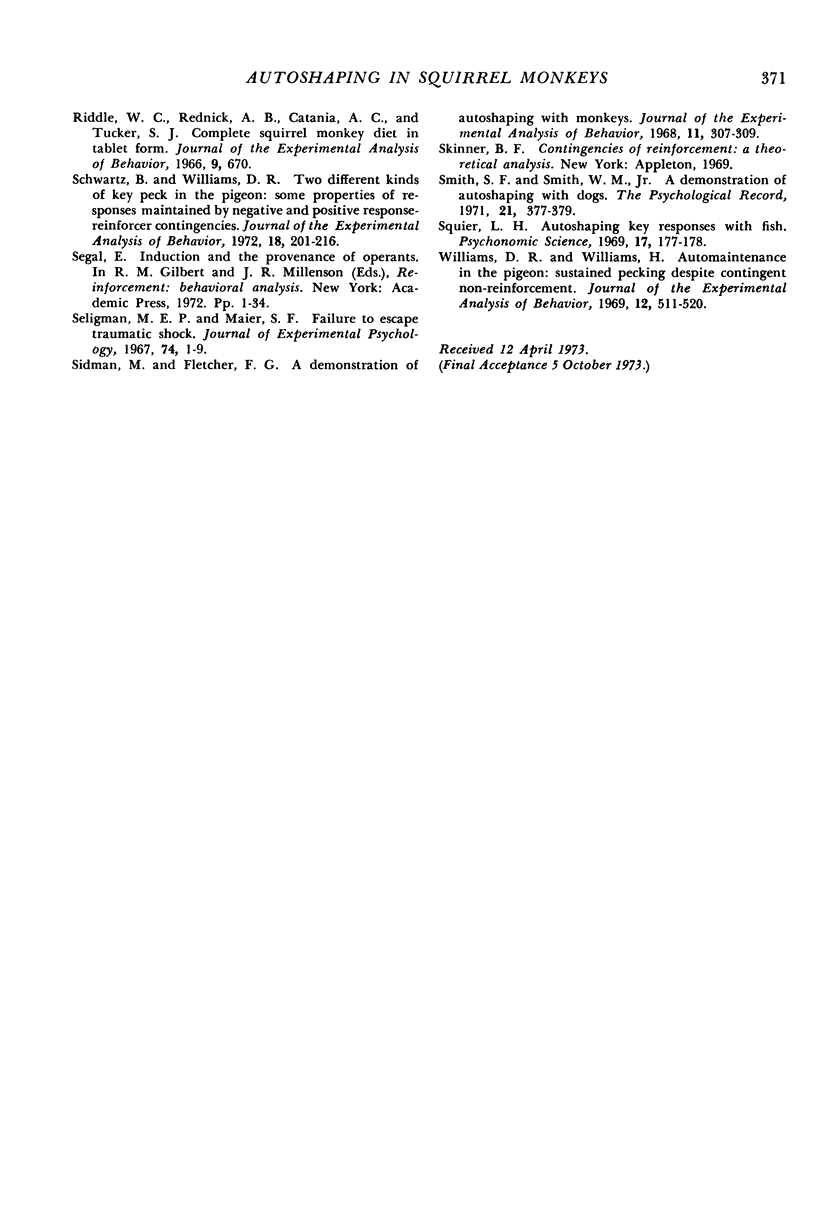
Selected References
These references are in PubMed. This may not be the complete list of references from this article.
- BULLOCK D. H. Repeated conditioning-extinction sessions as a function of the reinforcement schedule. J Exp Anal Behav. 1960 Jul;3:241–243. doi: 10.1901/jeab.1960.3-241. [DOI] [PMC free article] [PubMed] [Google Scholar]
- BULLOCK D. H., SMITH W. C. An effect of repeated conditioning-extinction upon operant strength. J Exp Psychol. 1953 Nov;46(5):349–352. doi: 10.1037/h0054544. [DOI] [PubMed] [Google Scholar]
- Gamzu E. R., Williams D. R. Associative factors underlying the pigeon's key pecking in auto-shaping procedures. J Exp Anal Behav. 1973 Mar;19(2):225–232. doi: 10.1901/jeab.1973.19-225. [DOI] [PMC free article] [PubMed] [Google Scholar]
- Gamzu E. R., Williams D. R., Schwartz B., Welker R. L., Hansen G., Engberg L. A., Thomas D. R. Pitfalls of organismic concepts: "learned laziness"? Science. 1973 Jul 27;181(4097):367–369. doi: 10.1126/science.181.4097.367. [DOI] [PubMed] [Google Scholar]
- Gamzu E., Schwartz B. The maintenance of key pecking by stimulus-contingent and response-independent food presentation. J Exp Anal Behav. 1973 Jan;19(1):65–72. doi: 10.1901/jeab.1973.19-65. [DOI] [PMC free article] [PubMed] [Google Scholar]
- Gamzu E., Williams D. R. Classical conditioning of a complex skeletal response. Science. 1971 Mar 5;171(3974):923–925. doi: 10.1126/science.171.3974.923. [DOI] [PubMed] [Google Scholar]
- Gardner W. M. Auto-shaping in bobwhite quail. J Exp Anal Behav. 1969 Mar;12(2):279–281. doi: 10.1901/jeab.1969.12-279. [DOI] [PMC free article] [PubMed] [Google Scholar]
- Jenkins H. M., Moore B. R. The form of the auto-shaped response with food or water reinforcers. J Exp Anal Behav. 1973 Sep;20(2):163–181. doi: 10.1901/jeab.1973.20-163. [DOI] [PMC free article] [PubMed] [Google Scholar]
- Peterson G. B., Ackilt J. E., Frommer G. P., Hearst E. S. Conditioned Approach and Contact Behavior toward Signals for Food or Brain-Stimulation Reinforcement. Science. 1972 Sep 15;177(4053):1009–1011. doi: 10.1126/science.177.4053.1009. [DOI] [PubMed] [Google Scholar]
- Rachlin H. Autoshaping of key pecking in pigeons with negative reinforcement. J Exp Anal Behav. 1969 Jul;12(4):521–531. doi: 10.1901/jeab.1969.12-521. [DOI] [PMC free article] [PubMed] [Google Scholar]
- Riddle W. C., Rednick A. B., Catania A. C., Tucker S. J. Complete squirrel monkey diet in tablet form. J Exp Anal Behav. 1966 Nov;9(6):670–670. doi: 10.1901/jeab.1966.9-670. [DOI] [PMC free article] [PubMed] [Google Scholar]
- Schwartz B., Williams D. R. Two different kinds of key peck in the pigeon: some properties of responses maintained by negative and positive response-reinforcer contingencies. J Exp Anal Behav. 1972 Sep;18(2):201–216. doi: 10.1901/jeab.1972.18-201. [DOI] [PMC free article] [PubMed] [Google Scholar]
- Seligman M. E., Maier S. F. Failure to escape traumatic shock. J Exp Psychol. 1967 May;74(1):1–9. doi: 10.1037/h0024514. [DOI] [PubMed] [Google Scholar]
- Sidman M., Fletcher F. G. A demonstration of auto-shaping with monkeys. J Exp Anal Behav. 1968 May;11(3):307–309. doi: 10.1901/jeab.1968.11-307. [DOI] [PMC free article] [PubMed] [Google Scholar]
- Williams D. R., Williams H. Auto-maintenance in the pigeon: sustained pecking despite contingent non-reinforcement. J Exp Anal Behav. 1969 Jul;12(4):511–520. doi: 10.1901/jeab.1969.12-511. [DOI] [PMC free article] [PubMed] [Google Scholar]


